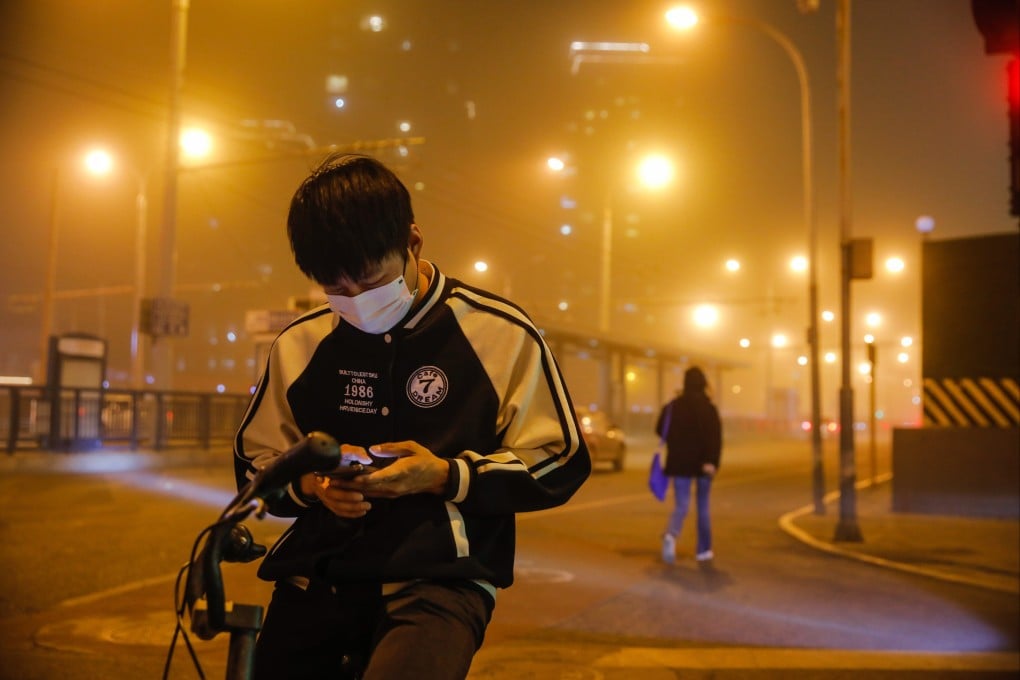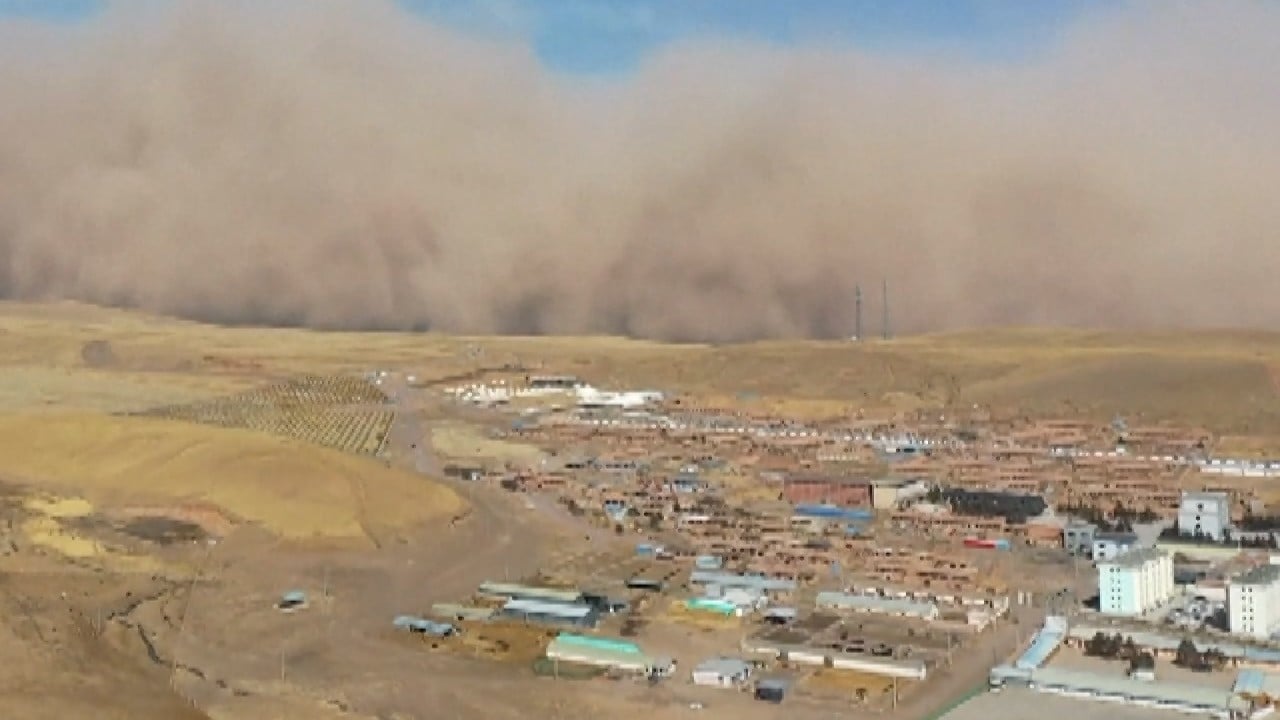Sandstorm strikes Beijing, with more on the way as hazy, windy weather sweeps across northern China
- It is the eighth sandstorm to hit the Chinese capital so far this year, marking the most active spring storm season in a decade
- While the country is working to improve urban air quality, there is little it can do to guard against gusts and dust from Mongolia

“The frequency of sandstorms this year, compared with other spring seasons, marks the highest for Beijing in the past decade,” said Ma Jun, director of the Institute for Public and Environmental Affairs, a non-profit environmental research firm.
The Beijing Meteorological Bureau issued yellow warnings – the second-lowest in a four-tier system – for sandstorms and wind on Monday evening and reminded the public to take the necessary precautions.
As of Tuesday morning, Beijing’s real-time air quality index was 500, indicating severe pollution, with PM10 being the primary pollutant.
PM10 refers to inhalable particles with a diameter of 10 micrometers or smaller. There is strong evidence showing that exposure to PM10 is associated with negative health impacts, according to the World Health Organization.

